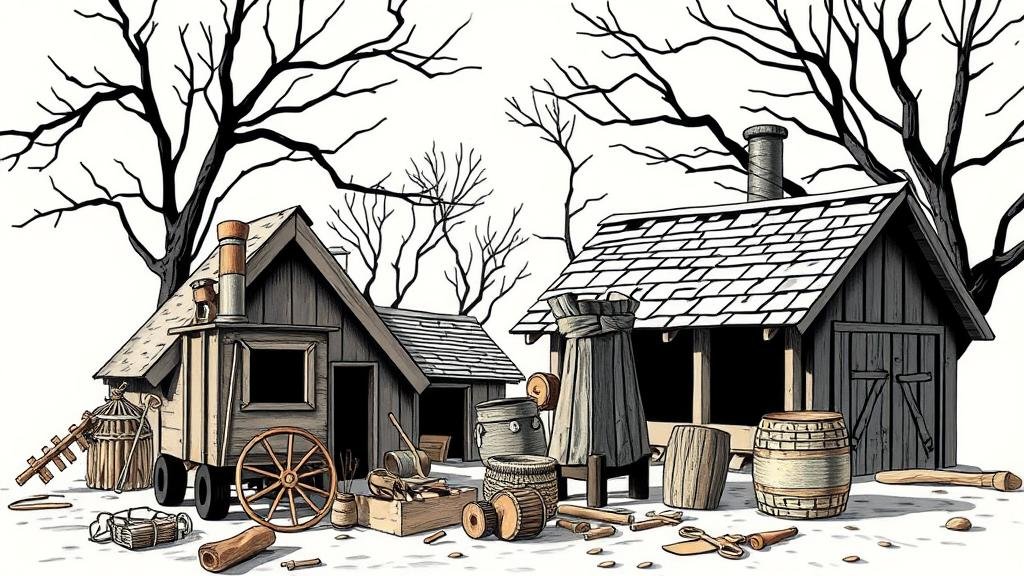Exploring Historic Pilgrim and Immigrant Routes for Artifacts
Exploring Historic Pilgrim and Immigrant Routes for Artifacts
The migration of peoples has shaped societies and cultures throughout history. Pilgrims and immigrants have traversed numerous routes, each leaving a trail of artifacts that tell the story of their journeys. This article delves into the significance of these historic paths, the artifacts they produced, and how the study of these routes can enhance our understanding of cultural heritage.
The Importance of Historic Routes
Historic pilgrim and immigrant routes serve as vital conduits for cultural exchange and transformation. e pathways were utilized by individuals seeking spiritual fulfillment or a better life, and tracing them unveils a tapestry of human experience. For example, the Camino de Santiago, an ancient pilgrimage route in Spain, has been walked by millions. As pilgrims journey toward the site of St. James, they have left behind not only physical artefacts but also intangible cultural contributions, such as traditions, music, and rituals.
Cultural Artifacts and Their Significance
Artifacts found along these historic routes are invaluable to historians and archaeologists. They can range from everyday items to religious relics. For example, the remains of old inns, pilgrimage badges, and religious sculptures found along the Camino de Santiago provide insight into the lives of those who traveled these paths.
- Religious tokens, such as scallop shells, which signify the journey of a pilgrim.
- Architectural remnants, including ancient monasteries and churches, showcasing the integrations of different cultures.
The artifacts tell stories that go beyond mere survival; they elucidate the socio-economic conditions, belief systems, and inter-community relations during the periods of migration.
Consider the Oregon Trail, a 2,170-mile route that connected the Missouri River to the valleys of Oregon. This trail was used predominantly by American settlers in the mid-1800s and left a rich deposit of artifacts, such as wagon remnants, tools, and personal items that illuminate the settlers challenges and aspirations.
Another significant route is the Great Migration from the rural South to urban centers in the North during the early to mid-20th century. This migration saw African Americans searching for better economic opportunities and escaping Jim Crow laws. Artifacts from this era–such as posters, photographs, and literary works–provide insight into the cultural and social ramifications of the journey.
Technology and Modern Archaeological Methods
Advancements in technology have significantly enhanced the exploration of these historic routes. Geographic Information Systems (GIS) and LiDAR technology, for example, allow researchers to visualize and analyze historical pathways and their surroundings through remote sensing. This has led to the discovery of previously undocumented routes and artifacts.
Further, citizen science initiatives have mobilized locals and enthusiasts, enabling them to contribute to archaeological findings. By documenting their findings and observations, these individuals assist in creating a more comprehensive picture of the historic routes cultural landscapes.
Challenges in Artifact Preservation
While the exploration of pilgrim and immigrant routes reveals significant artifacts, the preservation of these items poses challenges. Environmental degradation, urban development, and looting threaten the integrity of these sites. For example, the increasing urbanization along the Camino de Santiago can obscure or destroy important archaeological finds.
Organizations and governments are working to develop strategies to protect these sites. Partnerships with local communities, creating educational programs, and using digital platforms to raise awareness are critical components of these efforts.
Conclusion: Actionable Takeaways
Exploring historic pilgrim and immigrant routes provides profound insights into our collective human experience. artifacts that emerge from these explorations illuminate stories of resilience, faith, and aspiration.
To further this exploration, consider these actionable takeaways:
- Engage with local historical societies to learn about regional routes and artifacts.
- Participate in digging and preservation efforts through volunteer programs.
- Advocate for policies that promote the protection of historic routes and cultural artifacts.
By valuing and preserving the legacy of these journeys, we enrich our understanding of history and foster a deeper connection with the narratives that shape our communities.


